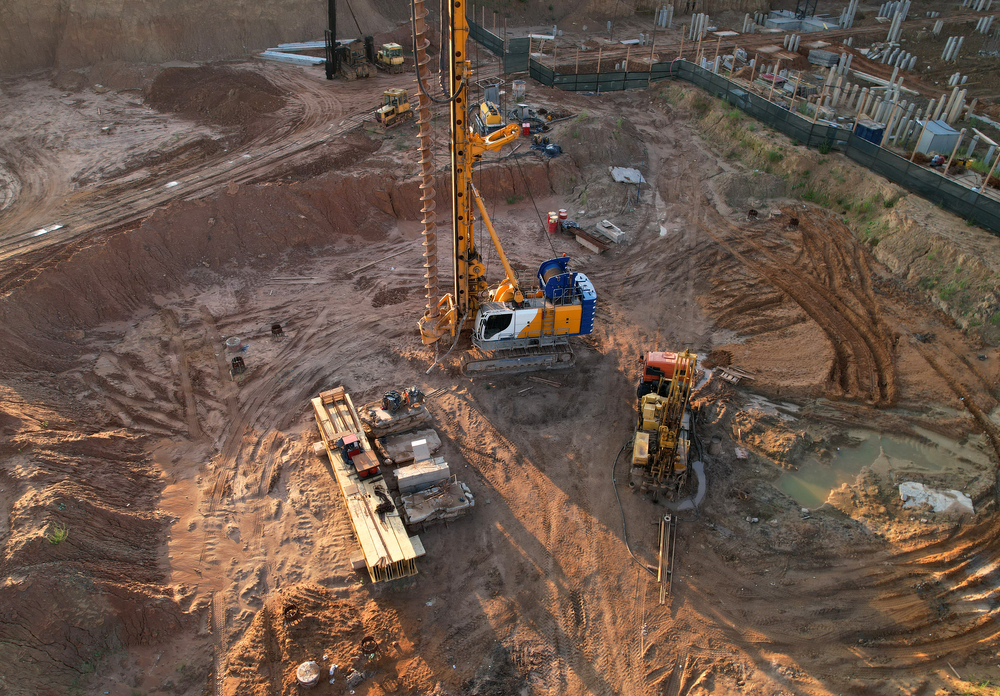The Definitive Guide to Geotheta
The Definitive Guide to Geotheta
Blog Article
A Biased View of Geotheta
Table of ContentsTop Guidelines Of GeothetaLittle Known Questions About Geotheta.The smart Trick of Geotheta That Nobody is Talking AboutAbout Geotheta
They work together with civil engineers, structural designers, designers, and various other specialists to integrate geotechnical considerations into the overall project design and construction process. This requires reliable teamwork, control, and interaction to make sure that the geotechnical aspects align with the task goals and satisfy regulatory requirements.Mining & Products Design: Concepts of drilling, infiltration prices, and factors influencing the option of exploration technique. Blowing up methods in surface and below ground functions. Mechanical and continuous techniques to fragmentation, consisting of longwall shearing and fullface boring.
Modelling of piece and bit size distributions; comminution as a transfer feature. Comminution modern technology: crushing, grinding, dimension classification. Integrated analysis of fragmentation and comminution procedures. Offered by: Mining & Products Engineering.
The Only Guide to Geotheta
Bachelor's degree programs in civil, geotechnical, geological, and ecological design normally last 4 years and consist of basic education training courses in English, social scientific research, and the humanities, along with programs in sophisticated mathematics, architectural geology, and fluid mineralogy. (https://medium.com/@ianhammond2191/about)
Geotechnical engineering entails the assessment of the dirt and rock problems at a certain website, and their implications for the development of that site. As a lot of structures count on the ground for support, it is without surprise that an in-depth understanding of the ground problems, and the viability of foundation systems, are vital to the long-term security and efficiency of the building or structure.
Being experts in the investigation of geological formations and ground behaviour, geotechnical engineers do scientific investigations and screening to recognize the effect these geological formations might carry the style and construction of building, civil and framework jobs. This experience is critical for the style and building of buildings, roadways, tunnels, dams, bridges, and water system and sewer system.
The geotechnical group at Douglas Allies regularly speak with architects, style designers, programmers, and building contractors to make suggestions on layout and development proposals to make sure that the built structures are appropriately designed for the ground problems. For instance, the style of footing systems needs to think about the weight of the structure, the capability of the ground to support that weight along with activity tolerances and effective construction.
The 30-Second Trick For Geotheta
This task is significantly simplified by the use our Douglas Map geospatial system which makes this details readily accessible in a simple to utilize web browser user interface. A geotechnical engineer will certainly guide the drilling of boreholes and test pits to accumulate soil and other samples, and also examine surface features and ground exposures to create a geotechnical design of the subsurface conditions.
Relying on the job type and ground problems came across, lab testing may among other points assess strength, compressibility, sensitivity and/or permeability of soil and rock samples. After this data is gathered and collated, the outcomes are used for a geotechnical model of the website, which is usually offered as sections throughout the site.

A geotechnical investigation by nature can only evaluate the ground problems at the places pierced or dug deep into. All-natural variations in soil and rock problems can happen throughout a website and in between test places. It is consequently good method that the geotechnical engineer be maintained throughout building of the task to offer on-site verification that the ground problems experienced are constant with the assumptions and advice supplied in the geotechnical investigation record.
Geotheta - The Facts
Geotechnical engineers utilize their thorough understanding of soil and rock to examine risk and address problems on varied framework projectsGeotechnical engineering is a specialist branch of civil design which takes a look at the practices of earth materials and the application of dirt and rock technicians. Consulting Engineers. As a geotechnical designer, you will evaluate the physical, mechanical and chemical buildings of soil and rock in order to make structures, keeping structures and earthworks
Geotechnical design is very closely linked to and overlaps with, both design geology and ground engineering - https://www.awwwards.com/geotheta/. It's possible to be experts in geotechnics or job for a geotechnical company but be known as an engineering rock hound or a ground designer. As a geotechnical engineer, you'll require to: construct and preserve partnerships with clients and various other specialists associated with the website, throughout each projectmaintain security requirements on website be mindful of expense effects when you make recommendationsstudy geological maps and airborne pictures from a variety of sources and from different time periodsexamine building plans to see just how possible they are based on your understanding of the siteinvestigate dangers or geological threats for the sitesearch for eco delicate functions, such as land fill beginning to develop accurate and expository ground modelsplan field investigationsdrill and evaluate examples of bedrock, dirt, groundwater and extra products manage various other professionals on sitesolve technical concerns as they occur, visit homepage such as unanticipated structures at drill sitesmonitor problems during and after construction to ensure frameworks are stable in the brief and long termadding information accumulated on site to your first researchcreating geotechnical estimations, illustrations, and 2 or three-dimensional computer system models analyzing the datamaking referrals regarding the recommended use of the website

Report this page